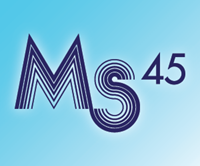By Aaron A.
[How Microsoft Changed The World - Part 1, Part 2, Part 3, Part 4 --- A full list of MS@45 content, resources and the schedule for our online experiences on the weekend of April 4-5 can be found here. Join in the celebration with us! #MSFT45]

With more than 54,000 employees in the Pacific Northwest, Microsoft helped reinforce Seattle’s identity as a tech-hub (but it didn’t create it).
Since its founding, Seattle has served as an important center for moving goods and peoples. Extractive industries like logging and fishing are technology-intensive and require sophisticated operations to process, prepare, grade, package, market, sell, and transport by ship or by rail around the globe. In its early years, the city also benefited as a way station for gold prospectors headed north to Alaska, offering opportunities to help spend their fortunes before they could be mined.
While trade, lumber, and fishing remained important industries for Seattle, its most important resource would ultimately prove to be people.
Boeing put the city’s proximity to lumber reserves to good use building airplanes in its early years, but it was the company’s ability to extract lucrative federal contracts during World War II that transformed Boeing into an aerospace giant. And it was the demands for advanced computation and modeling necessary to support defense and aerospace work that would fuel Seattle’s transformation into the digital age.
The University of Washington, for its part, supplied trained engineers—and maintained a Computer Science Laboratory with several large mainframe computers to support research. Students received training on these machines as part of their education, which only increased the availability of trained programmers in the region. For a time, even local high school students Paul Allen and Bill Gates gained access to lab, but their enthusiasm was deemed too disruptive by the Lab’s director and their privileges were revoked.
But back to Microsoft.
Microsoft was incorporated in Albuquerque, New Mexico, but as the company struggled to attract programming talent, the company moved to Bellevue, Washington in 1979. (One suspects that lingering homesickness on the part of the company’s twenty-something co-founders might have also swayed the decision). The next few years were go-go at Microsoft and the company rapidly began adding coders (and business development people, and marketing experts, and human resources folks, etc.) to its staff. The company opened its new campus in Redmond in 1986 and launched an IPO that instantly transformed more than 12,000 employees with vested options into millionaires.
The 1990s were more of the same for Microsoft and as the company grew, it lured an ever-expanding pool of programmers and tech professionals to the region. Seattle’s talent pool (among other reasons) influenced Jeff Bezos’ decision to move to Seattle in 1994 to establish the online bookseller Amazon.
As Amazon grew—like Microsoft before it—it attracted its own coders (and business development people, and marketing experts, and human resources folks, etc.) to Seattle. Today the region is home to Microsoft and Amazon, but also Zillow and Zulily and Porch and dozens others, with each hiring its own army of coders (and business development people, and marketing experts, and human resources folks, etc.).
This influx of people has transformed Seattle: two decades ago, South Lake Union was a neighborhood with a large concentration of shuttered car dealerships, now it is home to Amazon. Google and Facebook maintain outposts there too.
In 2017, the city of Seattle had roughly 114,000 more people living in it than it did in 2010, and if recent history is any indication, this trend will continue as new start-ups are formed and they start to hire coders (and business development people, and marketing experts, and human resources folks, etc.).